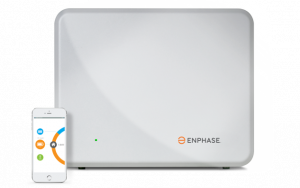The energy market is rapidly changing, and solar storage units, also known as ‘solar batteries’, are a large part of this. More and more Australians are installing solar batteries to complement their rooftop solar systems, allowing them to store the electricity generated by their panels for use at a later time, or to export back to the grid in exchange for a rebate.
If you’re considering installing a solar battery, then this is your starting point. In this article, we take you through the basics, including what a solar battery is, how it works, how much they cost, and whether they are worth the plunge.
On this page:
Advertisement
What is a solar battery?
A solar battery acts as an energy storage unit, storing electricity generated by solar panels to use after sunset. Ordinarily when electricity is produced by solar panels that isn’t used immediately by a household, it is diverted to the energy grid, where the customer receives what’s known as a ‘feed-in tariff’ – a small rebate on their energy bill.
Solar rebates will typically amount to 5c to 20c per kilowatt hour (kWh) of solar power exported to the grid. Since solar panels generate the most electricity through the day when nobody is home to use it, the majority of that solar power is exported to the grid.
Having a solar battery can help customers save money by using power generated from their own solar system, rather than relying on the grid. This is made possible because the price of electricity from the grid (20-35c/kWh) usually exceeds the standard feed-in tariff rate they would receive for exporting power instead of consuming it (5-20c/kWh). Solar batteries also allow customers to take advantage of time of use feed-in tariffs and save even more on power. This way, households can export power in peak demand periods to receive the highest feed-in tariff.
How do solar batteries work?

Otherwise known as an ‘energy storage unit’, a solar battery works by storing the excess electricity generated from a household’s solar system during the day. The surplus of energy that is stored by the battery can then be used later at night during peak usage periods when electricity rates tend to be more expensive.
A solar battery can be connected to an existing photovoltaic (PV) system or installed with a new solar panel system. Some solar panel installers may even offer you a solar and battery system install with no upfront costs. Most solar batteries will vary in size from 1kWh to 15kWh, depending on the house or small business’ energy usage needs.
There are four common types of solar batteries: Lithium-ion, Flow, Nickel-Iron and Lead Acid. However, these may change as technology advances. Lithium-ion is typically the most common type found on the market for households.
What features should I look for in a solar battery?
When picking a solar battery, there are a few key specifications that households should be mindful of in order to make an informed purchase decision. These are as follows:
- Depth of Discharge: Most solar batteries are unable to entirely discharge without being damaged. The ‘depth of discharge’ is a metric that describes how much of the battery’s power (in percentage) can be discharged (i.e. 80%).
- Storage (kWh): The storage capacity of a battery is measured in kilowatt-hours (kWh). There are two types of storage: nominal and usable. Nominal storage refers to the total amount of electricity that can be held. Usable storage refers to the total amount of electricity that can be used, after factoring the depth of discharge.
- Power (kW): Power is measured in kilowatts (kW) and refers to the maximum amount of electricity that a battery can discharge in any one moment. The more power, the faster the battery will discharge. This is an important specification if your home uses a lot of electricity.
- Cycle: A ‘cycle’ refers to a discharge and recharge of a battery. It is often used as a measurement of battery life. Most batteries have a lifespan of several thousand cycles.
- Lifespan: The ‘lifespan’ is an indicator of the time the battery is expected to last before it severely degrades. The lifespan is usually measured in years or number of cycles. The battery is still usable at the end of its lifespan; however, it will likely only hold about 60-50% of its original capacity.
- Backup Capabilities or Emergency Power Supply (ESP): This refers to the battery’s ability to power a household whilst disconnected from the grid during a blackout or power outage. Not all batteries come with this feature, and the ones that do, may only do so in varying capacities.
Understanding these specifications and aligning them with the energy needs of your household will help you during the decision-making process. If you are confused at all by any of these terms or specifications however, you can also discuss them with a licensed solar installer during your quotation process.
Read more: The best solar battery storage for your home
How long do solar batteries last?
A good quality solar battery will typically last between five to 15 years before it needs replacing. You may be able to run your battery at reduced capacity towards the end of its life though, to push out its use just a little longer before replacing.
What size solar battery do I need?
The exact size of battery needed for a solar system will vary depending on the amount of electricity used by the household and what time this usage occurs. If you wish to power your entire house on solar energy or you use a large portion of electricity in the evening, you’ll likely need more storage space than the average household in order to fulfil your needs. A good rule of thumb however, is to have at least double what your system is capable of. For example, if you have a 5kW solar system, you’ll probably need at least a 10kW battery for sufficient battery storage.
Solar Plans & Prices
Here are some of the cheapest solar-specific deals from the retailers on our database. These costs are based on the Ausgrid network in Sydney but prices will vary depending on your circumstances. We show one product per retailer, listed in order of lowest price first. Annual price estimates assume general energy usage of 3900kWh/year for a residential customer on a single rate tariff. Price estimates exclude solar feed-in tariff credits. These are products from referral partners†. Our database may not cover all deals in your area, and please check retailer websites for up to date information. Here are some of the cheapest solar-specific deals from the retailers on our database. These costs are based on the Citipower network in Melbourne but prices will vary depending on your circumstances. We show one product per retailer, listed in order of lowest price first. Annual price estimates assume general energy usage of 4000kWh/year for a residential customer on a single rate tariff. Price estimates exclude solar feed-in tariff credits. These are products from referral partners†. Our database may not cover all deals in your area, and please check retailer websites for up to date information. Here are some of the cheapest solar-specific deals from the retailers on our database. These costs are based on the Energex network in Brisbane but prices will vary depending on your circumstances. We show one product per retailer, listed in order of lowest price first. Annual price estimates assume general energy usage of 4600kWh/year for a residential customer on a single rate tariff. Price estimates exclude solar feed-in tariff credits. These are products from referral partners†. Our database may not cover all deals in your area, and please check retailer websites for up to date information. Here are some of the cheapest solar-specific deals from the retailers on our database. These costs are based on SA Power network in Adelaide but prices will vary depending on your circumstances. We show one product per retailer, listed in order of lowest price first. Annual price estimates assume general energy usage of 4000kWh/year for a residential customer on a single rate tariff. Price estimates exclude solar feed-in tariff credits. These are products from referral partners†. Our database may not cover all deals in your area, and please check retailer websites for up to date information.
How much do solar batteries cost?
A new solar battery will cost around $2,000 to $20,000, depending on the size and make of the model. Smaller batteries, such as the 1.2kWh Enphase storage unit, cost roughly $2,000, while larger batteries such as Tesla’s 13.5 kWh Powerwall 2, will cost around $15,000, excluding installation fees.
Read more: Cheapest Solar Batteries in Australia
Are solar batteries worth it?
In short, it depends on your circumstances. Some households may find they’ll benefit from a solar battery more than others, simply due to the way they consume their energy. This is because to get the most out of a solar battery, households will likely need to change the way and times in which they use their energy.
Households on a controlled load or time of use tariff for example, may find more value in a solar battery than those on say a single rate tariff. This is because customers on a time of use or flexible pricing tariff can benefit from lower grid power rates for most of the day, and keep their stored solar power to cover energy usage during peak periods when grid power is more expensive.

Customers on a controlled load tariff can also use the varying rate structure to speed up their savings by connecting their solar battery to the controlled load and charging their battery overnight with grid electricity that’s at a cheaper rate. They can use then use their charged battery in the morning peak period rather than paying full price for electricity.
This not to say, however, that a household on a single rate tariff wouldn’t find any value in a solar battery. These kinds of customers may instead wish to focus on reducing their reliance on grid power in general as a means to reduce their electricity bills.
No matter the circumstance, the bottom line with solar batteries is that you get from them what you put into them. So, if you aren’t ready or willing to change your energy usage habits, you may find you’ll miss out on a large portion of your returns and savings.
The best way to know whether you’ll benefit from a solar battery is by talking to a solar installer about your options. They’ll be able to take into account the different energy needs of your household and recommend a solution tailored to these needs. If you are on the lookout for a solar installer, then be sure to check out our annual ratings on professionals in this area below.
Image credit: Sandy Schulze/Shutterstock.com, Enphase Energy Australia, Ufuk ZIVANA/Shutterstock.com




Share this article